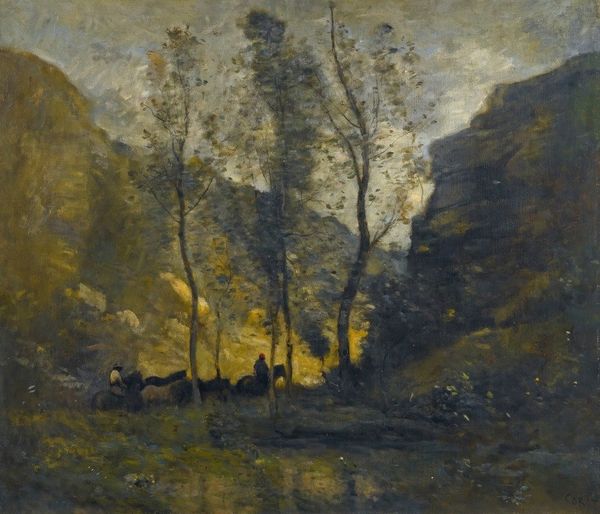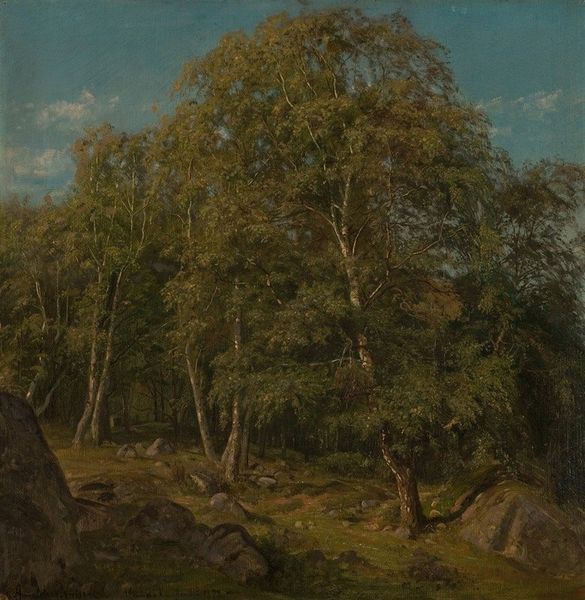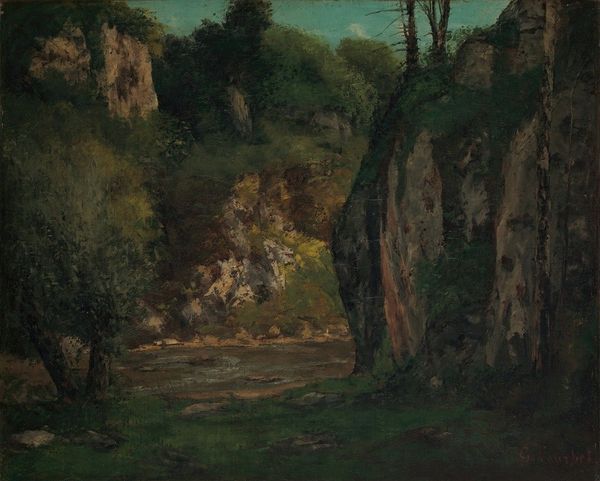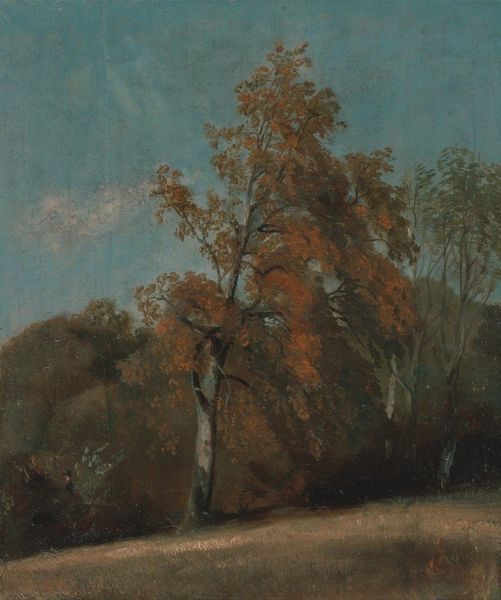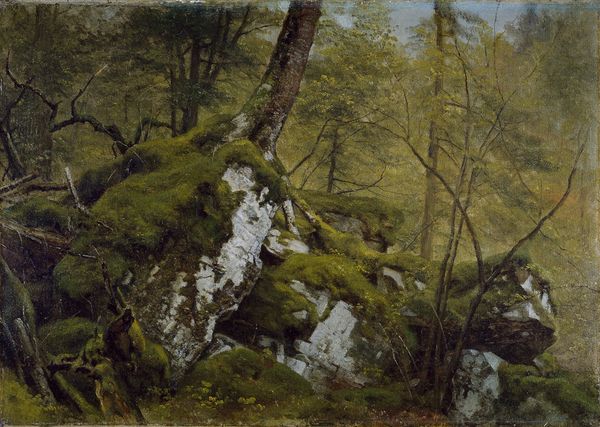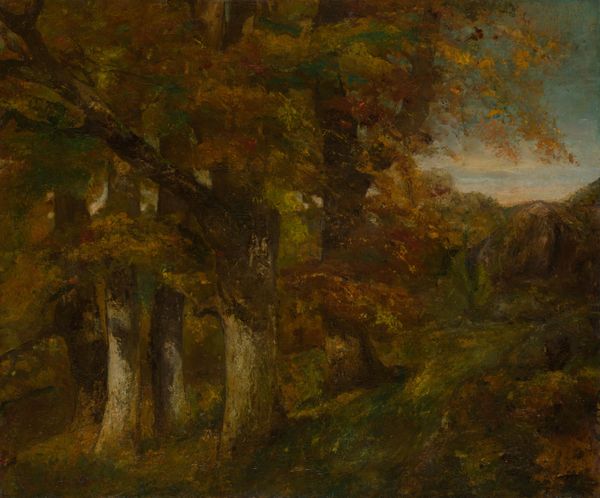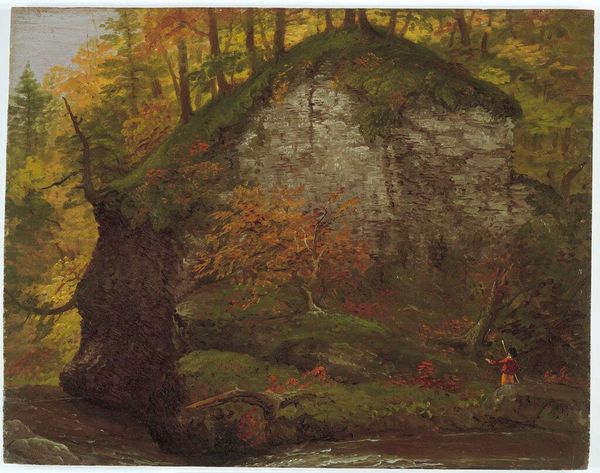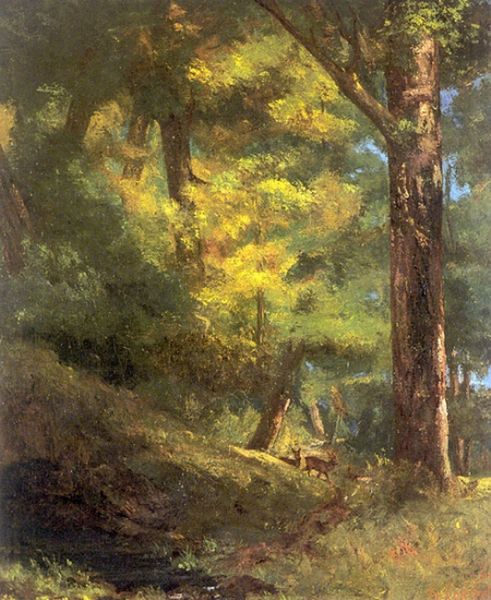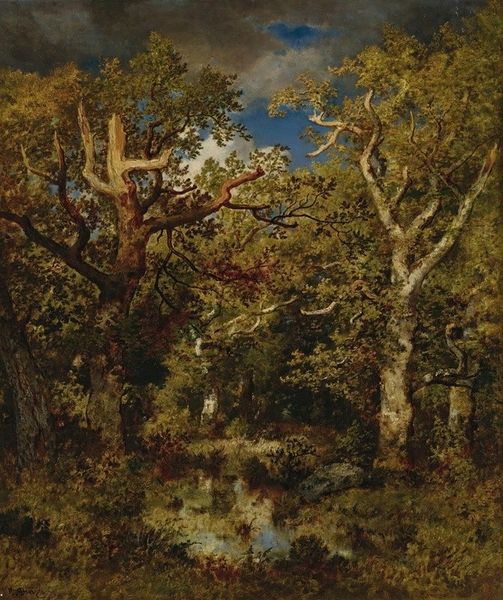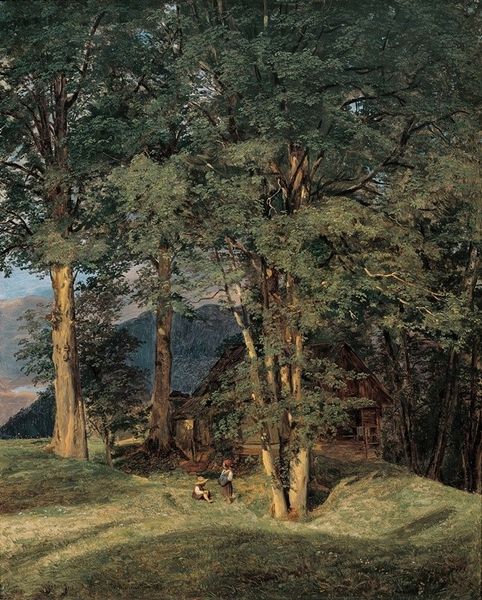
Copyright: Public Domain: Artvee
Editor: So, here we have Courbet's "The Glen at Ornans," painted in 1866, with oil on canvas. The palette is quite subdued, mostly browns and greens. I'm curious, looking at it from your perspective, what strikes you most? Curator: The intense materiality of the paint itself. Notice Courbet's application, the visible brushstrokes. This isn't a window onto a scene, but an object in itself, crafted with physical labor. Consider, too, the social context: industrialization was rapidly transforming the French countryside. Does this raw application reflect anxieties about the changing relationship between humans and nature, a commentary on how industrial methods shape art and labor? Editor: That's interesting. I was just seeing the landscape. The sheer amount of brown maybe didn't allow me to consider beyond face value. How would we normally view his process? Curator: Traditionally, art history separates "fine art" from craft. But Courbet’s emphasis on the physical act of painting challenges that hierarchy. We should question how the industrial revolution may have influenced the way art was being produced and the artist's understanding of their labor within a society rapidly changing. Did the emerging manufacturing processes subtly influence how even "nature" was perceived and replicated through art? Editor: I guess I was thinking more literally of Romanticism, but this context you are giving allows for more depth. Curator: It goes beyond simple representation. Courbet is demonstrating a physical engagement with materials, mirroring the human interaction with a landscape increasingly shaped by labor and industry. Perhaps it's a reminder that our experience of nature itself is mediated by production and consumption. What does thinking about the 'means of production' reveal about a seemingly simple landscape? Editor: I now look at "The Glen at Ornans" with a sense of labour embedded within it. Curator: And perhaps the next time you look at an artwork, consider the unseen processes, the labour involved, and how materials reflect their socio-economic context.
Comments
No comments
Be the first to comment and join the conversation on the ultimate creative platform.

